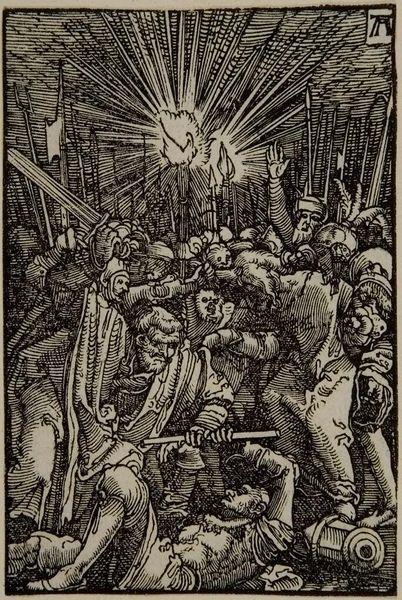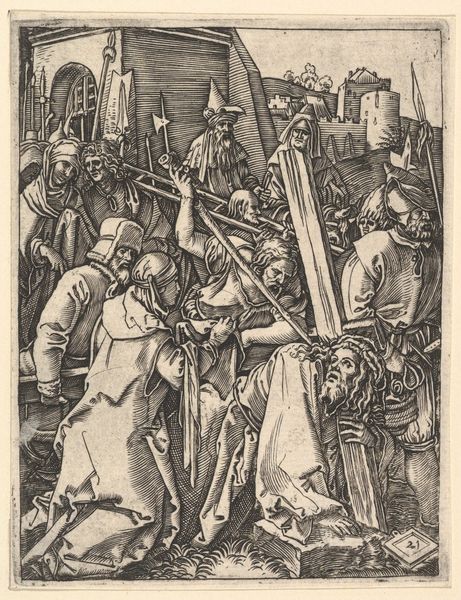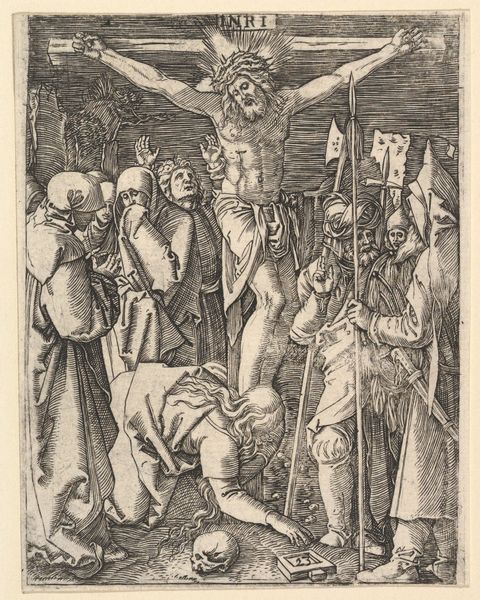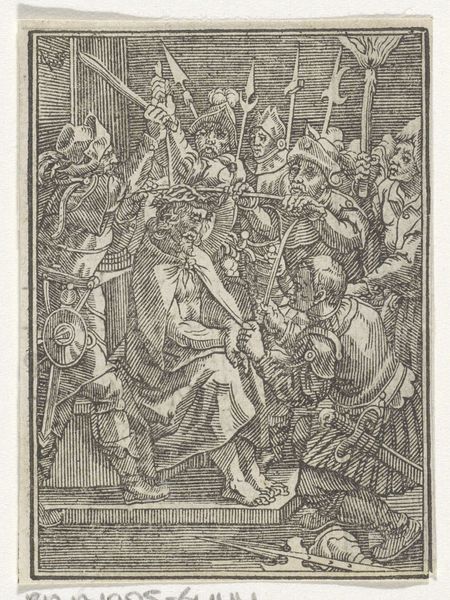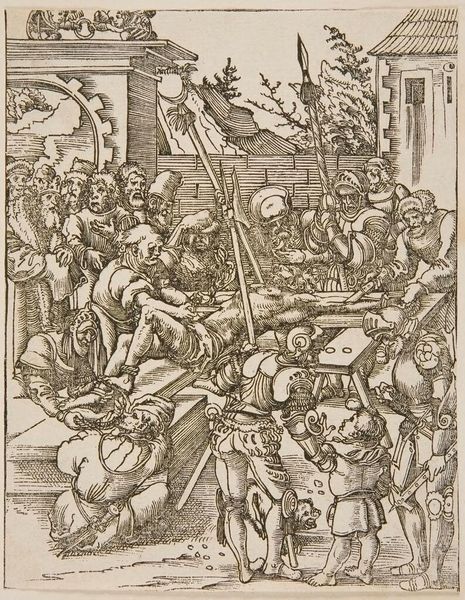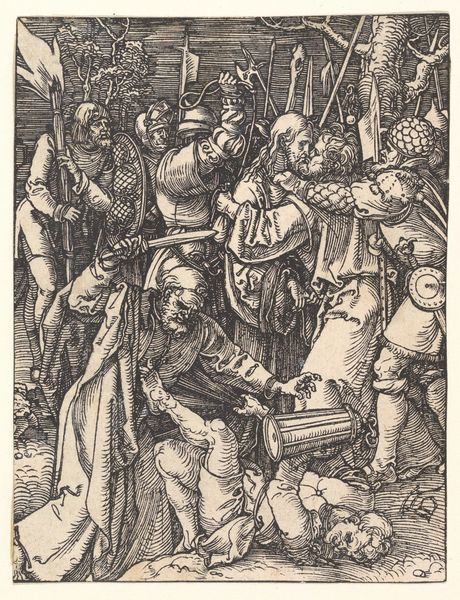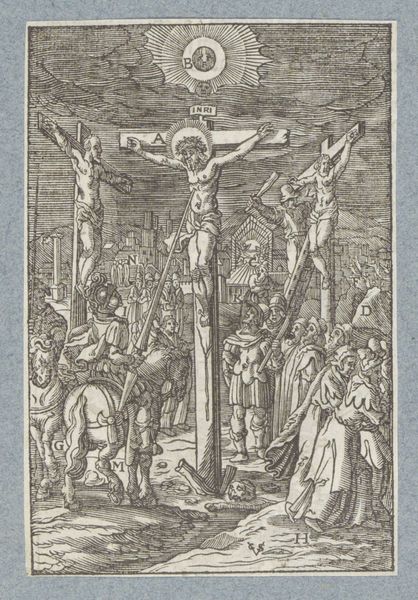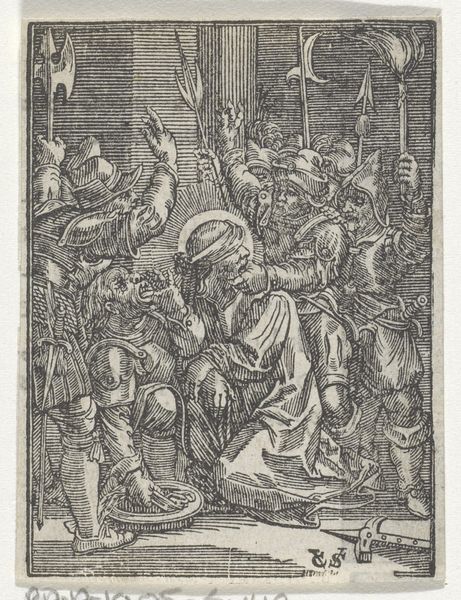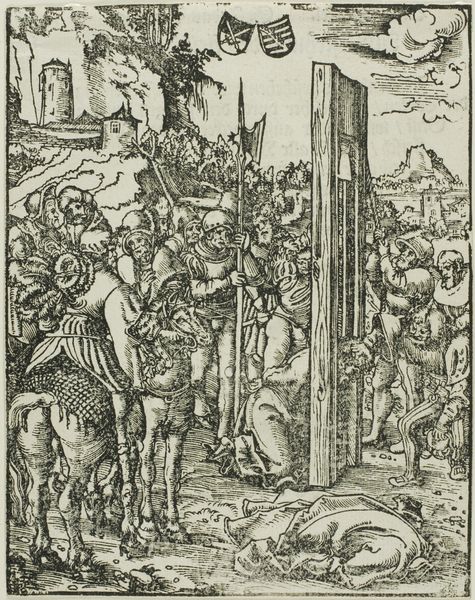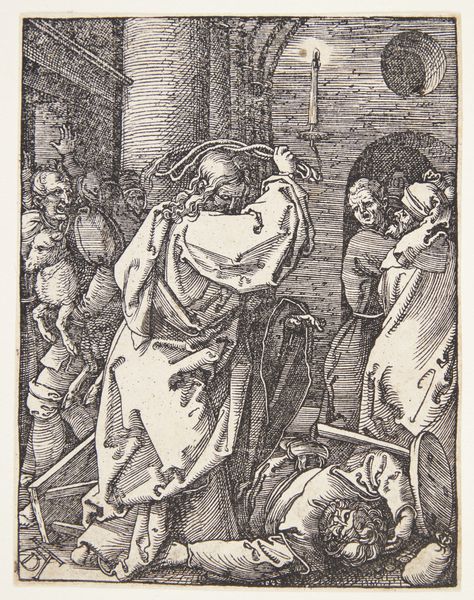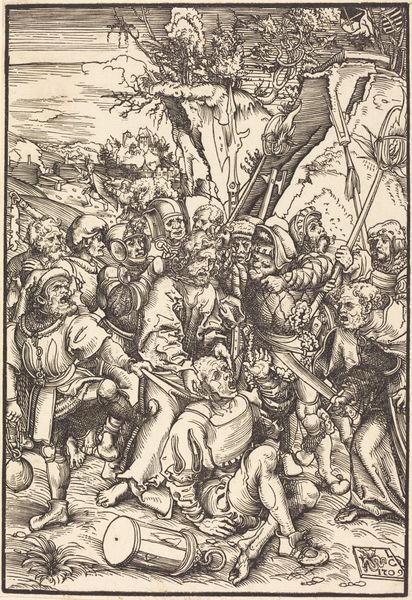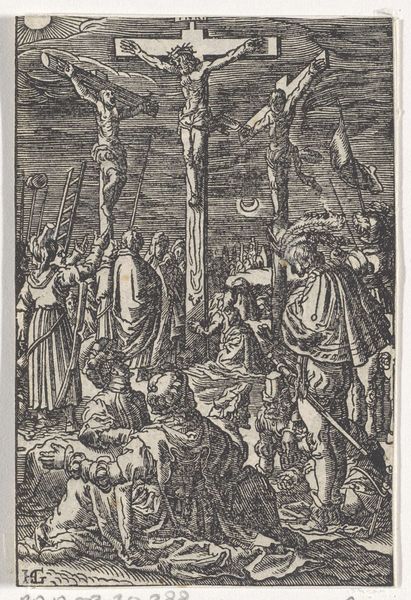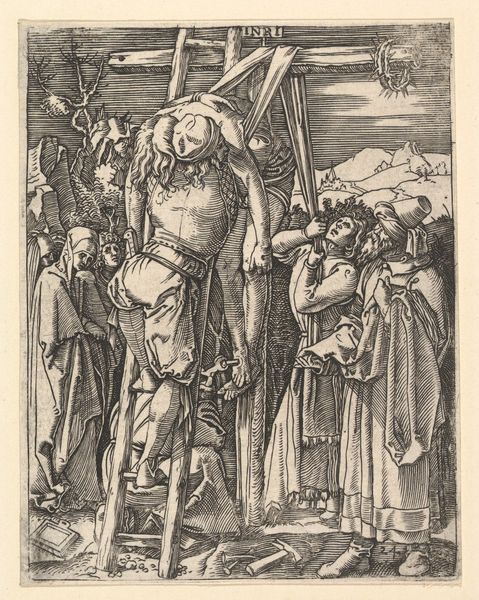
The Betrayal, from The Fall and Redemption of Man 1513
0:00
0:00
drawing, print, intaglio, paper, engraving
#
drawing
#
medieval
# print
#
intaglio
#
paper
#
history-painting
#
italian-renaissance
#
engraving
Dimensions: 72 × 49 mm (image/block)
Copyright: Public Domain
Curator: Looking at Albrecht Altdorfer's 1513 engraving, "The Betrayal, from The Fall and Redemption of Man," now held at The Art Institute of Chicago, I'm immediately struck by its starkness. The black and white contrast, the dense crowd—it feels claustrophobic and volatile. What are your initial impressions? Editor: Yes, that's an apt description! There's a powerful visual tension, isn't there? I’m particularly drawn to the radiant light source at the top, battling against all this chaos, a kind of symbolic beacon almost swallowed by the event itself. What meaning can you draw from the light, given its symbolism within Christian Iconography? Curator: Considering the biblical narrative of Christ’s betrayal, the light likely symbolizes divine presence and knowledge, perhaps even divine judgment. The chaotic throng represents the betrayal and moral darkness descending upon humanity. But notice how Altdorfer uses the graphic medium to amplify these meanings, the tight network of lines creates the effect of unease and adds tension. Editor: Right, and this moment—the betrayal—it's often depicted in grand paintings. But here, as a relatively small engraving on paper, it takes on a more immediate and perhaps even unsettling tone, what statement might that be saying about popular conceptions of art and image? Curator: I think that smaller scale personalizes the scene, and that this level of reproduction helped democratize and decentralize power. This print makes the drama far more accessible, it no longer just hangs in a palace or a church for a selected few to witness, the medium itself plays into the theme of dissemination, a moral lesson gone “viral.” Editor: I agree completely, this would allow for new audiences of many to reconsider their personal accountability and response. It definitely adds another dimension to the betrayal—the public's role in, perhaps, perpetuating such events, generation after generation. What I see is that the message of the betrayal isn’t trapped in this moment, but is re-born anew. Curator: Exactly. And through careful deployment of symbolic imagery and the immediacy of the print medium, Altdorfer ensures its relevance remains. Editor: Yes, a testament to the lasting impact that historical reflection—when powerfully rendered—can offer its audience. Thank you for helping illuminate this fascinating artwork.
Comments
No comments
Be the first to comment and join the conversation on the ultimate creative platform.
